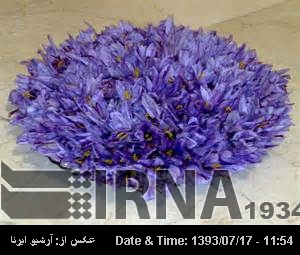Abbas Hemmati, the faculty member of the institute, said there are 70,000 hectares (173,000 acres) of saffron farms in the northeastern provinces of Khorasan Razavi and South Khorasan.
“After harvesting the stigma from saffron flower, the violet petals are thrown away as waste,” Thursday's edition of 'Iran Daily' quoted him as saying.
He noted that about 20,000 tons of saffron petals are discarded as waste in Iran, adding that the petals contain anthocyanin pigments.
Hemmati explained that anthocyanins are pigments that may appear red, purple or blue depending on their pH.
They belong to a parent class of molecules called flavonoids.
“Anthocyanins have antioxidant, anticancer and anti-inflammatory properties,” he said. Hemmati added that the natural dye can be produced in aqueous solution and powder form.
The ethanol extract of saffron petals possesses antidepressant, antinociceptive, antihypertensive and antitumor activities.
Phenolic compounds, which include flavonoids and anthocyanins, are likely the biologically active components of the saffron petal and associated with health benefits for humans and animals.
The antioxidant and antimicrobial properties of saffron have been noticed in recent years. The beneficial effects derived from phenolic compounds have been attributed to their antioxidant activity.
**1425

Tehran, Oct 9, IRNA - A team of investigators at the Research Institute of Food Science and Technology have extracted dye from saffron flower waste for application in food and pharmaceutical industries.

